How to Catch White Bass: Complete Guide to Techniques, Gear, and Locations
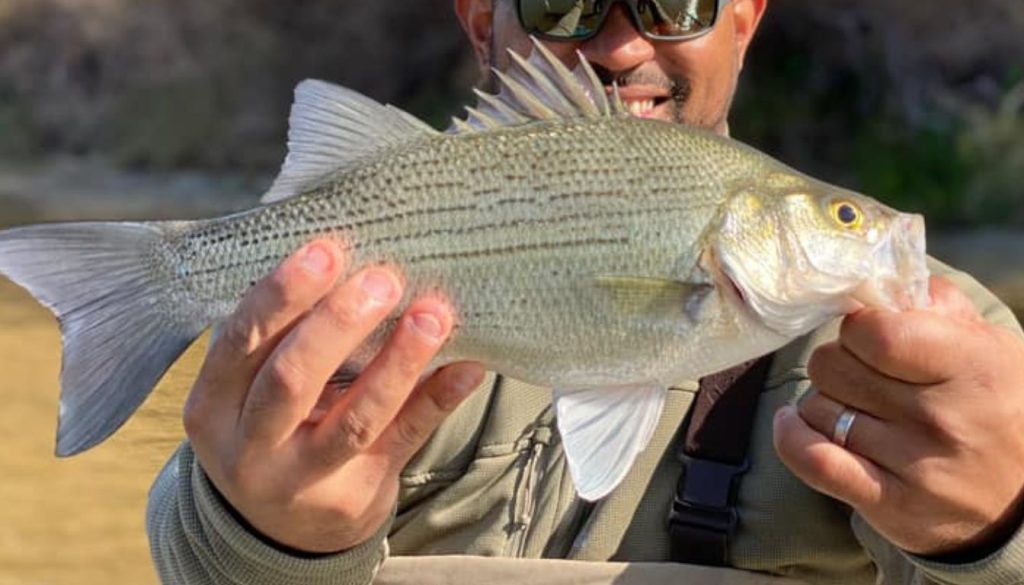
Species Profile
Quick Identification
White bass (Morone chrysops) is a schooling freshwater temperate bass native to North America. They have a silvery-white body with 4–7 dark horizontal stripes (the top stripe typically extends unbroken) along each side.
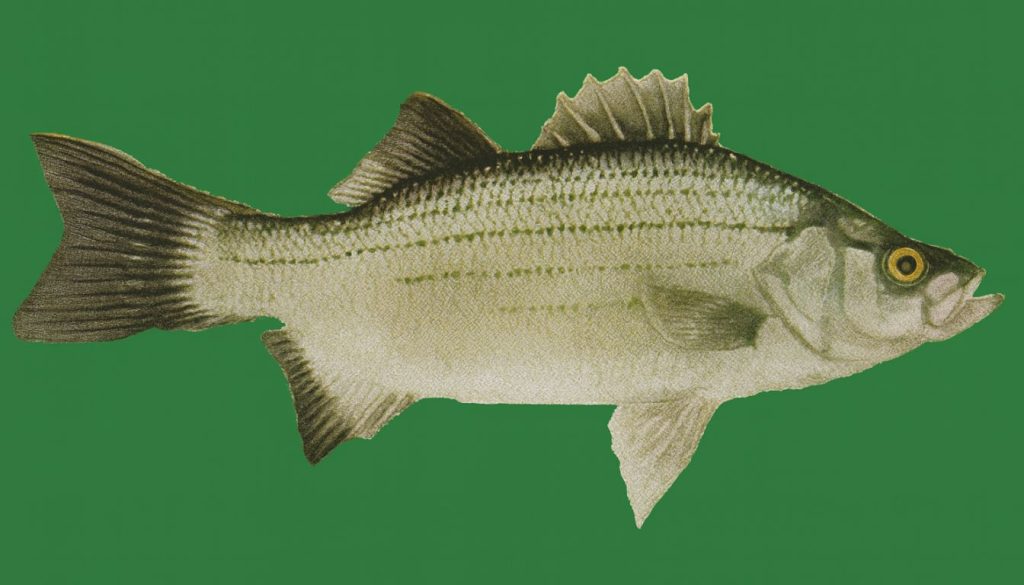
Unlike their relatives (striped bass), white bass have a single patch of teeth on the tongue. Regional nicknames include “sand bass,” “silver bass,” and “white perch.”
Adults average about 12–15 inches long (∼1–2 lb); larger ones reach 17–18″ and up to ~6.8 lb (the IGFA world record is 6.81 lbs).
Why Target This Species
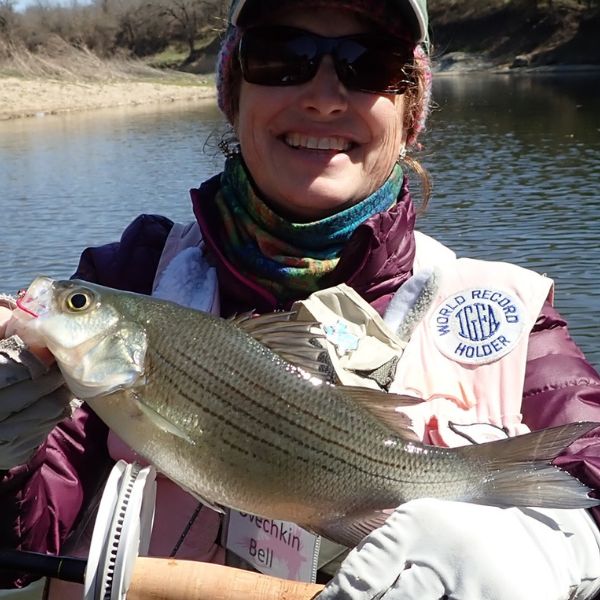
Catch difficulty: White bass are beginner-friendly “thrill fish.” They school aggressively and bite readily, so anglers (even novices or children) see constant action. Little special casting or technique is needed; many guides note “little to no waiting” for strikes.
Sport value: These fish put up a spirited fight. Though not large, their quick runs and jumps make them exciting on light tackle. White bass are “excellent fighters” and are highly sought after in spring and summer.
Culinary value: White bass have firm white flesh and are considered “superb table fare.” Anglers prize them for both sport and eating.
Seasonal peak: The prime time is spring (March–May) when fish run into rivers to spawn, and again in summer when they school on baitfish. (In many regions the run starts as water warms to ~50–55°F.)
Behavior and Feeding
Hunting Pattern
White bass are schooling pursuit predators. They roam open water in groups, chasing baitfish such as shad. Often the school will “drive” or corral prey into tight balls at the surface, a behavior that can look like mini-feeding frenzies.
Peak feeding tends to occur at dusk and dawn, though aggressive spring spawns and summer shad baitballs can bring them up at any time of day. When feeding, white bass may force prey to the surface under diving birds or wind-driven edges.
In spring, they migrate upstream and stage in currents (rocky riffles or shoals) to spawn. Outside spawning, they usually stay in open-water areas but will often patrol structure (ledges, points) in schools.
Primary Diet
White Bass Diet & Feeding Patterns
Understanding their prey drives your fishing success
🎯 Primary Food Source: Shad Dominance
Juveniles (Under 4–6″)
Transition Size (4–10″)
Adults (10″+)
📅 Seasonal Feeding Shifts
Artificial Lures
Natural Baits
Pro Fishing Strategy
When white bass feed on insects or crustaceans (especially in spring near shorelines), natural baits like nightcrawlers, grasshoppers, or small crayfish can trigger aggressive bites. However, for consistent year-round success, matching shad patterns with lures or live baitfish remains your best strategy. The key is understanding what they're actively feeding on in your specific water body.
Where and When to Find Them
Key Habitat
White bass inhabit freshwater lakes, reservoirs and river systems across much of the U.S. and southern Canada. They prefer open water but gather around structure and changes in cover. Spawning occurs on gravelly shoals or riffles in tributary rivers (or near dam crests) when temperatures reach ~50–60°F. After spawning, schools move back into the main lake or river, often holding over humps, points, drop-offs, channel edges, and weedlines. Submerged rocky points, brush piles, docks or riprap often concentrate fish. In some waters, specially placed fish attractors (brush bundles) draw them too.
High-probability zones include: major creek mouths and channel breaks (especially wind-blown points); dam tailwaters and riprap in early morning/evening; and main-lake points or deep humps during summer. For example, guides report that Indiana’s Cagle’s Mill Lake tends to hold schooling white bass along points in 10–15 ft using shad-colored lures. In Kansas, anglers find white bass around the north/south shore fish attractors and breakwaters at Spring Lake. Similarly, many Texas reservoirs (e.g. Lewisville, Worth, Eagle Mountain) and rivers (e.g. Brazos River) are famous for huge “sand bass” schools.
Fishing Calendar
Optimal Conditions
White bass tend to bite best during low-light periods and favorable conditions. Early morning and late evening often produce the most action. Wind can be an ally: breeze pushes bait toward one shore, concentrating fish and making one side of the lake especially hot. Overcast or slightly cool days often trigger surface feeding; bright sun may push fish deeper. In general, stable water conditions or a slight barometric drop help fish feed. (Freshwater white bass aren’t affected by tides; focus on wind, light, and feeding cues instead.)
Monitoring water temperature is key: the pre-spawn run turns on around 50°F and peaks near 55–60°F. Once spawning starts, look for hungry schools near inlets or shoals. Reports confirm that targeting wind-blown coves and structure in the morning/evening yields the most strikes.
Gear and Techniques
Recommended Setup
Primary Gear: A medium-light to medium power spinning (or baitcasting) rod around 6–7 feet long is ideal. Spinning gear is popular for its ease with light lures. Match this with a smooth reel spooled with 6–12 lb test line (monofilament or 8–10 lb fluorocarbon). This setup is sensitive enough to feel subtle bites yet strong enough to handle schooling runs. Use a smaller hook (size #6–#2) for natural baits, and snap-swivels for quickly changing lures.
Alternative Setup: In heavy current, deep water or when giant “wipers” (striped bass hybrids) are present, step up to a 7–8 ft medium-heavy rod with 10–15 lb braided line. This allows heavier jigging spoon or slab rigs under strong drift. A baitcasting outfit with 15–20 lb line can also work for long casts or trolling big lures. For bank fishing, a 6–7 ft medium rod with similar line is versatile. Fluorocarbon leaders (~10–12 lb) can be added to any setup for invisibility in clear water.
Effective Baits and Lures
Top 3 Natural Baits (with rigging): White bass will hit a variety of live baits.
- Nightcrawlers/Worms: Large earthworms or red worms work especially well on the bottom. Thread one on a small hook (size 4–6) with a split-shot or under an egg sinker (slip-sinker rig) to keep it near the lakebed. Drift this rig around structure or cast into schooling fish for a quick bite.
- Minnows/Shad: Fresh fathead minnows or threadfin shad (2–4″ long) are the classic choice. Hook on a #6–#2 bait hook and drift under a slip-bobber, or use on a jighead for vertical jigging. Aim to present the bait 1–2 ft off bottom unless surface feeding is observed.
- Crayfish/Crustaceans: Small crayfish (freshwater crawfish) entice bass feeding near rocks. Nose-hook a 2–3″ crayfish on a 1/0–#2 hook and let it crawl along the bottom. The natural movement and scent can draw strikes. (In some areas, large grasshoppers or crickets rigged under a bobber can also fool a hungry bass spring through summer.)
Essential Lures: A few go-to artificial lures cover most situations:
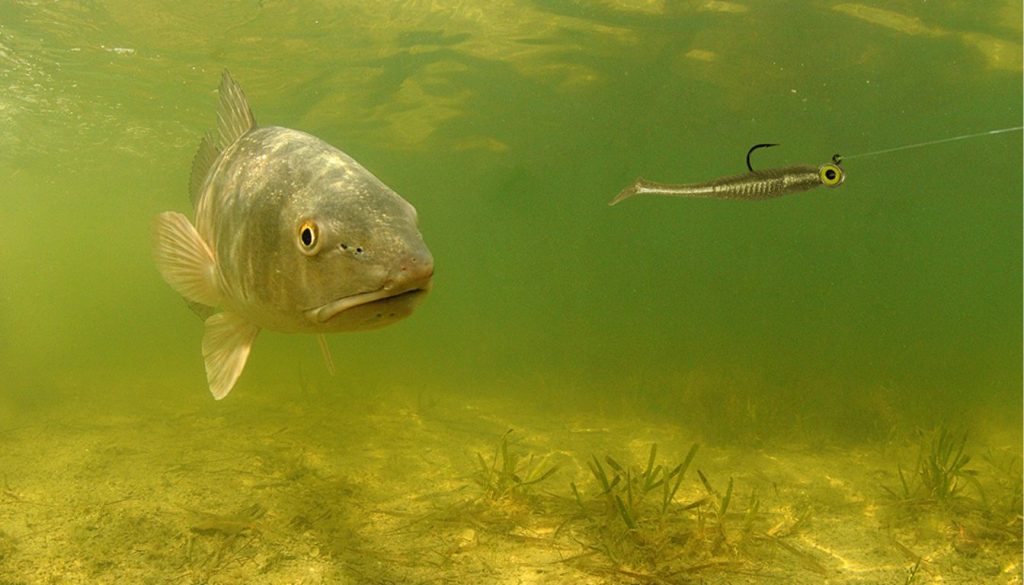
- Vertical Jigging Spoons: Silver or white spoons (1/4–1/2 oz) are deadly for deep or vertical fishing. Drop the spoon under the boat and lift the rod tip (3 o’clock to 12 o’clock motion) repeatedly, letting it flutter on the fall. Most strikes happen on the flutter down. Excellent colors include chartreuse/white, bright silver, or gold.
- Inline Spinners: Small spinners (Mepps, Rooster Tails) in silver or gold can be cast through active schools or trolled. A #3 or #4 spinner with a silver blade in clear water, or bright/chartreuse in murk, appeals to chasing bass. Retrieve at a steady pace; the flash and vibration draw strikes.
- Grubs and Soft Plastics: Curly-tail grubs or paddle-tail swimbaits (2–3″) on 1/16–1/4 oz jigheads are versatile. Work them around brush piles, laydowns or shallow flats. White, chartreuse, or bluegill patterns are effective. A Mr. Twister-type grub, swimbait or marabou jig in natural white/blue/green will often trigger hits, especially in clear water.
- (Bonus) Crankbaits/Topwater: Lipless crankbaits (e.g. Rat-L-Trap) in shad patterns can cover water quickly in spring or summer. In early spring creeks, walk-the-dog topwater plugs or poppers in white/chartreuse can produce explosive strikes when fish are shallow.
Colors & Sizes: Match the hatch – white bass often eat 1–2″ shad. In clear water, use lures in white or silver with dark backs; in stained water, switch to bright/chartreuse tones. If one size isn’t working, downsizing a lure (to 1″) usually helps generate more strikes.
Fishing Techniques
Locate the fish: First, find schools by watching the water and using electronics. Look for diving gulls, baitfish flickers or surface boils that betray a school. Structure such as points, humps, drop-offs and inlets are prime search areas.
Main approach – Cast & Retrieve: When you spot a school, cast beyond or in front of it and retrieve through the school. If fish are shallow or actively feeding, use fast-moving lures (topwater walkers, spinners) and a quick retrieve. For deeper or more lethargic fish, use a slower, pulsating retrieve with spoons or grubs, keeping the lure in the strike zone. Vary your retrieve: a steady “crank” often works, but slight jerks or pauses can trigger reaction strikes.
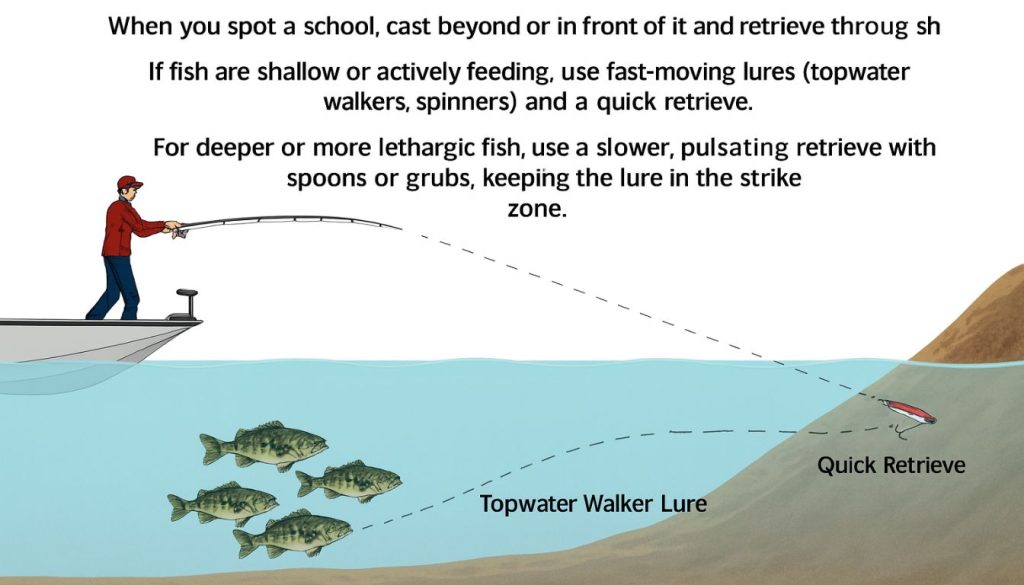
Vertical jigging: If fish are deep or directly below the boat, switch to vertical jigging. Drop your spoon or jig to the bottom (over 15–30 ft) and then work the rod tip as described above. Lift the lure a foot or two and let it fall; most bites occur on the fall. Keep tension on the line to feel strikes and set hook quickly.
Trolling: In large reservoirs, slow trolling small spoons or spinner rigs (1–3 mph) can cover flats and ledges. Rig 10–15 lb line on a medium rod with a snap-swivel and lure. Trolling is especially effective when white bass are suspended and spreading out.
Alternative tactics: If you have only live bait, drift a bobber-rigged minnow at varying depths until you find the strike zone. (Fixed bobbers work well when fish are near surface.) In river current, weight your line to keep bait near bottom. In stained water or at night, drop a nightcrawler rig deep with a slip sinker.
- Pro tips: Adjust lure size to local forage – often smaller lures catch more (white bass commonly eat 1–2″ prey). Fish the windward shore or downwind flats on breezy days to find pushed-in bait. When surface fish stop biting, try downsizing or moving deeper. Always match your gear to the bite – when fish are hyper, lighter tippets and smaller hooks ensure better hooksets.
Catch and Handling
During the Fight
White bass fight vigorously but not deeply. When hooked, keep the rod tip high and maintain steady pressure to wear them out. They often leap or dart, so be ready to tighten the drag and reel quickly. Avoid a “jerky” hookset – a firm but smooth pull usually drives the hook home without tearing the fish’s lip. Watch your line: these fish can throw hooks in a split second if slack, so keep tension. Common mistakes include over-setting the hook (tearing out) or using too light line (breaking on a strong run). Adjust your drag to let the fish take line on the first hard run but stop it before the fish reaches cover.
Catch and Release
If releasing fish, minimize stress. Wet your hands or use a rubberized net when handling to protect the fish’s slime coat. Support the fish horizontally and remove the hook gently (barbless hooks or pliers help). If the fish is deeply hooked, cut the line as close as possible instead of prolonging struggle. Avoid lifting fish out of water unnecessarily; better to hold them in the current upright until they can swim on their own. Return fish quickly to the water; if it seems sluggish, gently move it back and forth to get oxygen flowing over its gills. Proper handling greatly improves survival, especially in warm water.
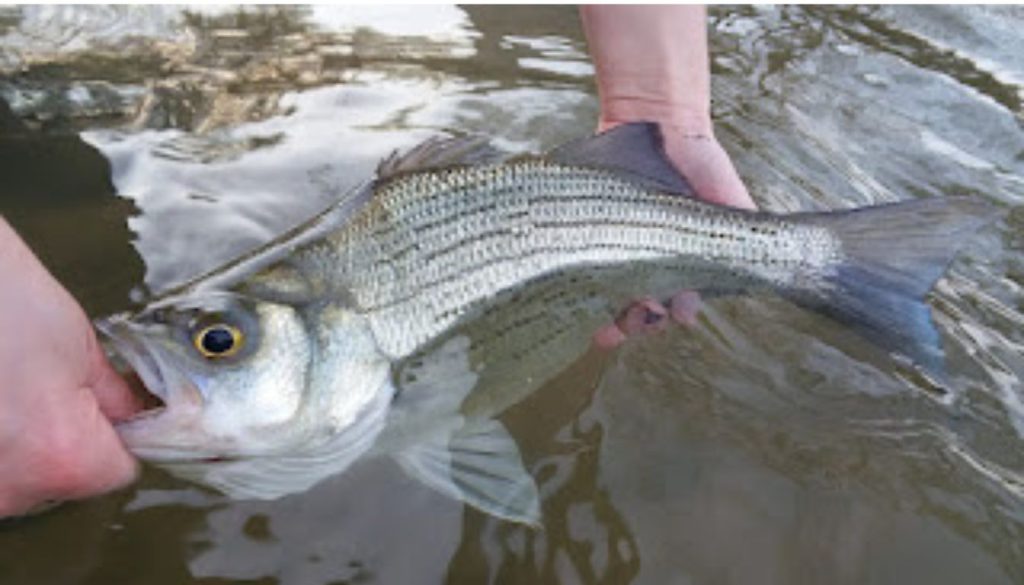
For Consumption
For keeping fish to eat, dispatch them humanely and preserve quality. A firm knock on the head (pithing) or sharp spike to the brain will humanely kill a bass. Bleed the fish by cutting the gills or tail knot to improve flesh quality. As soon as possible, gut and clean the fish, then place the fillets on ice – white bass flesh spoils quickly in heat.
Many cooks recommend a quick soak in buttermilk or lemon juice, then coating in seasoned cornmeal, and pan-frying golden brown. (Anglers often say white bass are “excellent to eat,” making catch preservation worthwhile.) Always follow local regulations on size and bag limits, and process your catch promptly to enjoy it at its best.
Sources: Authoritative fishery guides and angler reports were used for this summary
wildlifedepartment.com, ensuring up-to-date, expert-backed information on white bass.
